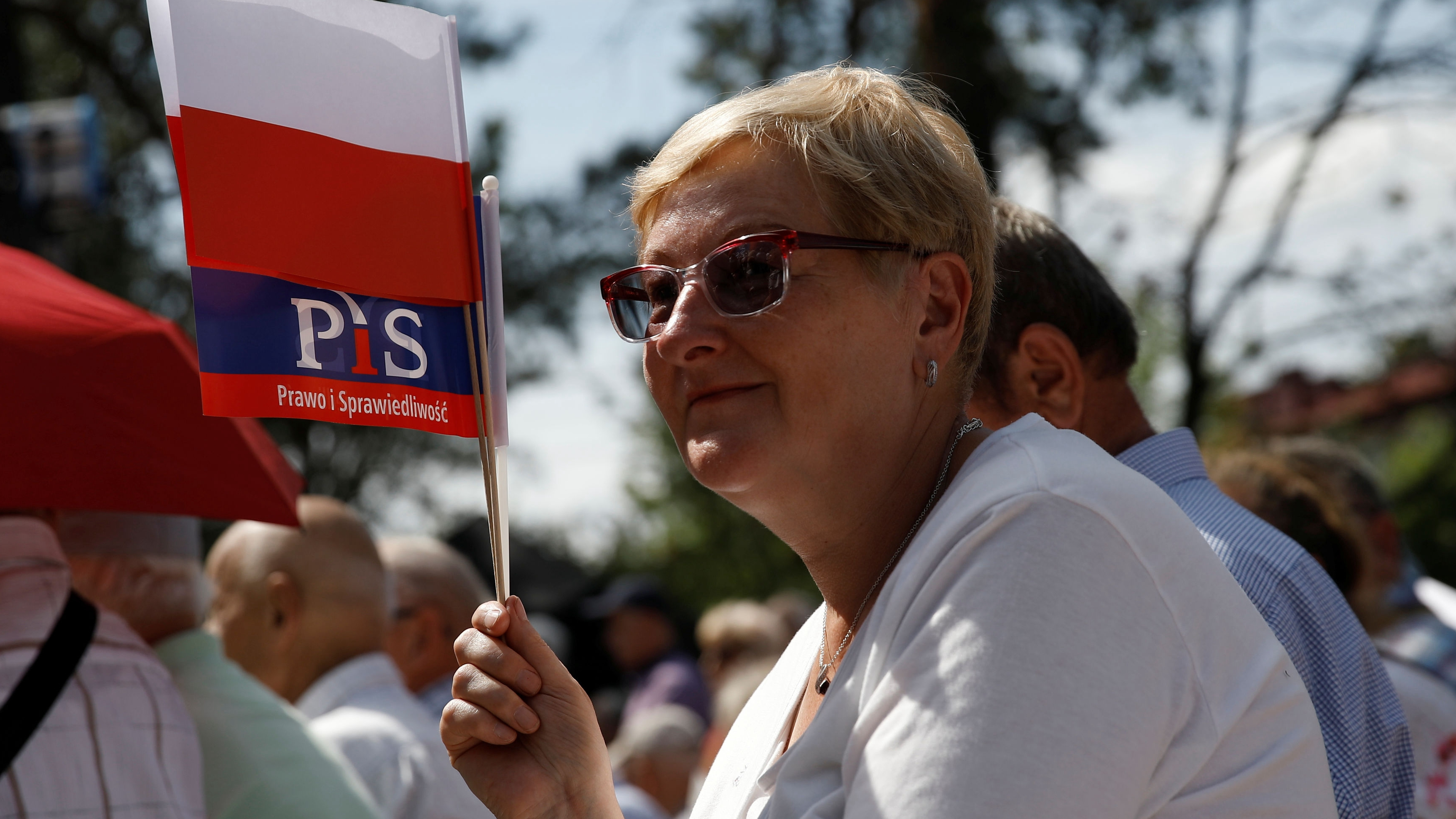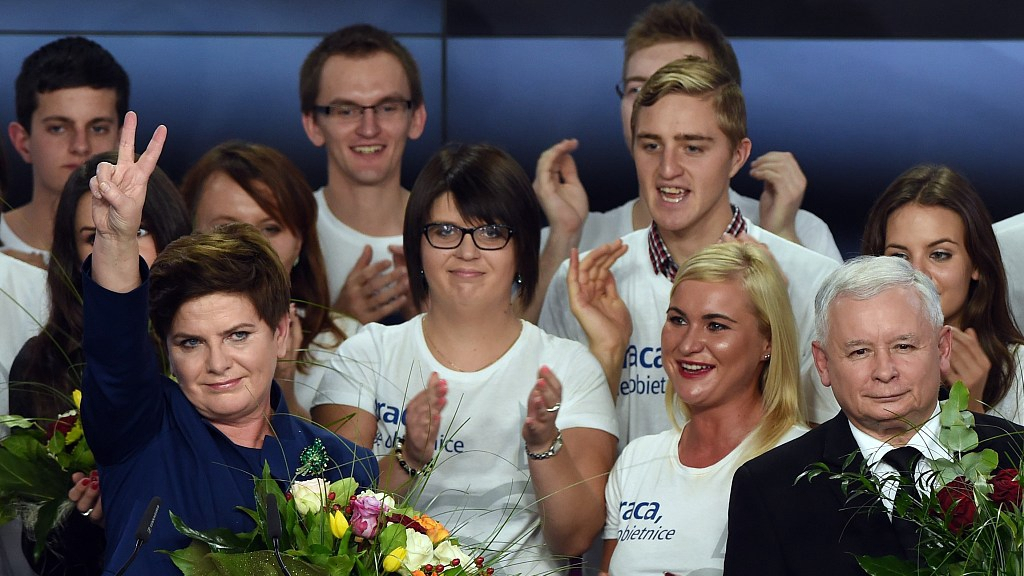02:22

Poland holds its parliamentary election on Sunday. Given the leading position of the current ruling Law and Justice (PiS) in recent polls, many suggest the conservative party may win another victory to add to its first-place finish in the European Parliament election in May.
The vote, determining 460 members of the lower house of parliament, named the Sejm, and 100 seats in the Senate, is regarded as one of the most critical elections in 30 years as many hold that division may intensify if the PiS wins again due to its controversial conservative policies towards LGBT people and other minorities.
Opinion poll IBRIS shows the PiS winning a second four-year term with more than 40 percent of the vote for the Sejm versus 25 percent for the main opposition group Civic Coalition and around 10 percent for the left-wing coalition.
The ruling party retains strong popularity since it came to power in 2015. In the last parliamentary election in 2015, the PiS won 61 seats in Senate and 37.6 percent of the vote, which translated into 235 seats in the Sejm, an outright majority, after smaller parties failed to reach a threshold in the election.
In May, it won another decisive victory in the European Parliament election with 45 percent of the votes and 26 of Poland's 51 seats, compared with the 38 percent of votes, 22 seats gained by opposition bloc the European Coalition (KE) which is made up of center-left to left-wing parties headed by Civic Platform, Polish People's Party and Democratic Left Alliance.

A supporter attends a Law and Justice (PiS) election meeting in Stalowa Wola, Poland, August 18, 2019. /Reuters Photo
A supporter attends a Law and Justice (PiS) election meeting in Stalowa Wola, Poland, August 18, 2019. /Reuters Photo
Experts regarded the result as one of the indicators for the upcoming national election. Given the strong momentum – even outperforming the most optimistic polls, the PiS is expected to win in the October election.
To block the PiS, the opposition, including the centrist Civic Coalition and several leftist parties, have joined forces to try to win a majority in the 100-seat Senate by agreeing not to put up rival candidates.
The Sejm is elected on a system of proportional representation based on party lists while the Senate is chosen on a system of first-past-the-post, whereby the candidate who wins most votes in a given constituency is duly elected. Given the election system of Poland, the opposition strategy is feasible.
"If the opposition parties don't compete with each other (in the Senate race) and unite behind one candidate in each district, they have a chance to win a Senate majority," said Anna Materska-Sosnowska, a political scientist at Warsaw University.
Read more:
Poland's elections: What you need to know

Jaroslaw Kaczynski (R, front), leader of the conservative opposition Law and Justice (PiS) and Beata Szydlo (L, front), candidate for prime minister celebrate with supporters at the party's headquarters in Warsaw after exit poll results were announced on October 25, 2015. /VCG Photo
Jaroslaw Kaczynski (R, front), leader of the conservative opposition Law and Justice (PiS) and Beata Szydlo (L, front), candidate for prime minister celebrate with supporters at the party's headquarters in Warsaw after exit poll results were announced on October 25, 2015. /VCG Photo
Another shock to Poland's society
The PiS victory in the last election shook the country as it marked the first time in the post-communist era that a party won an outright majority in parliamentary elections.
With a majority in both the Sejm and the Senate, the party cleared obstacles for its bills and made remarkable achievements in economic and social welfare aspects. Its adherence to election promises and revolutionary measures such as introducing family allowances and other spending policies drew votes from a lot of Poles.
But critics argue that the PiS's outright majority also led to bills being passed without critical analysis and challenges from the opposition.

Law and Justice (PiS) leader Jaroslaw Kaczynski speaks with supporters during an election meeting in Stalowa Wola, Poland, August 18, 2019. /Reuters Photo
Law and Justice (PiS) leader Jaroslaw Kaczynski speaks with supporters during an election meeting in Stalowa Wola, Poland, August 18, 2019. /Reuters Photo
Apart from that, the PiS caused controversy over its migration and anti-LGBT policies. Also, it was criticized by the European Commission as Poland is one of the few countries that opposes the EU's 2050 Climate target.
As a socially conservative and euroskeptic party, the PiS draws a lot of supporters in the Catholic country with its clear stance and effective economic policies. However, its leading position also helps create a united front for the left-leaning parties, which in turn intensify the division in Poland's society.
The electorate in Poland is now divided roughly in half between the right-leaning parties headed by the PiS and leftist coalitions such as the KE, with the support rate of 46 percent and 54 percent, respectively.
With little hope of breaking the balance given the current societal mood in Poland, the upcoming election is expected to start a battle once again.
(Cover: Election posters are pictured in Warsaw, Poland, on October 9, 2019. /VCG Photo)